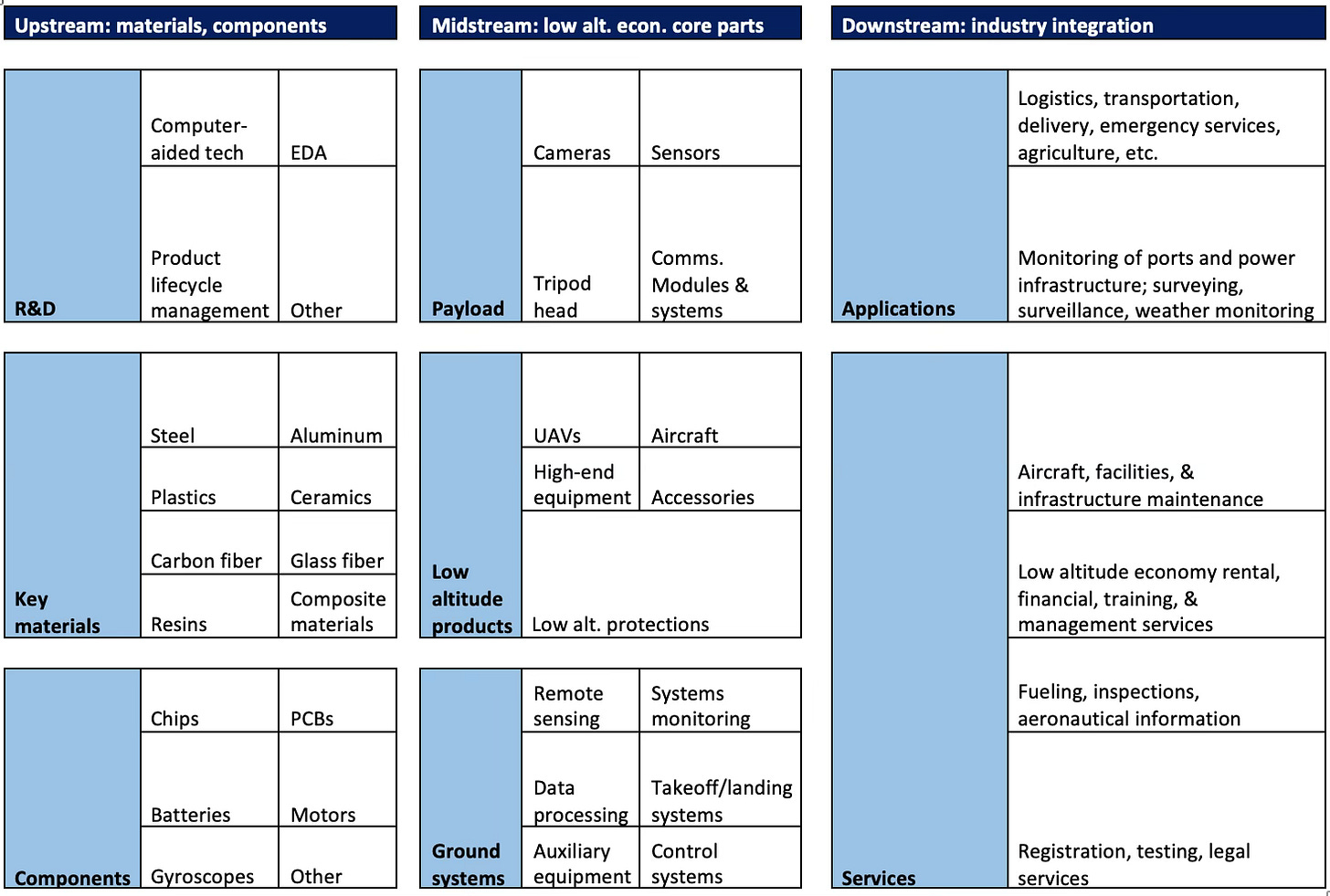Welcome to a/symmetric, published by Force Distance Times. Each week, we bring you news and analysis on the global industrial contest, where production is power and competition is (often) asymmetric. To receive issues over email, subscribe here.
This week:
The US considers banning DJI drones. But a singular focus on a surface-level threat risks repeating Washington’s failed strategy against Huawei. China’s latest push to develop a “low altitude economy” underlines this point.
Weekly Links Round-Up: Huawei’s secret funding of US research, hackers target edge devices, and law firms navigate US-China tensions
Missing the swarm for the drones

US lawmakers are considering banning Chinese drone maker DJI, whose products American authorities deem a national security threat.
Legislation currently under consideration would put DJI on a Federal Communications Commission blacklist, barring the company’s drones from running on US communications infrastructure. Other Chinese companies already on that FCC list include telecommunications equipment makers Huawei and ZTE, and video surveillance giant Hikvision.
But DJI is just one player in China’s drone sector — which, in turn, is one segment of the incipient “low altitude economy” that Chinese policymakers are dreaming up and rushing to bring to fruition.
A singular focus on the threat from DJI therefore risks a reprise of the failed strategy against Huawei. Banning a prominent surface-level player might deal its business a short-term blow. But leaving the deeper network of suppliers and industry peers untouched would do little to actually disrupt longer-term prospects of the target company.
Low altitude economy, high level support
In China, policy momentum is building around the “low altitude economy.”
The concept refers to airspace up to 3,000 meters (9,840 feet) above ground. It’s being billed as a trillion-dollar economy in the air, including both manned and unmanned flights and everything that makes that possible: aviation infrastructure, materials and components, flight systems and services, and vast industrial applications.
The table below is one schematic representation of the low altitude economy’s industrial chain:

The low altitude economy is getting high level support. In March, it was mentioned as one of several strategic emerging industries in the Chinese government’s latest work report. Both in the months before and since then, numerous local governments have rolled out policy measures to boost the low altitude economy.
Shenzhen’s Nanshan district — the drone capital of China, accounting for more than half of the country’s drone production by value — is among the most aggressive on this front. Among its recently published “special support measures” for the low altitude economy are:
Millions of yuan in subsidies for low altitude economy businesses newly settled in the district;
Tens of millions of yuan in subsidies for producers of relevant machine equipment, core components, and critical materials;
R&D subsidies of up to 60 million yuan per business;
Subsidies to cover 50% of total construction costs for low altitude economy infrastructure projects.
Meanwhile, Nanshan is also pushing ahead on infrastructure construction. Last month, local authorities put out a tender for planning and developing take-off and landing facilities for low altitude aircraft. This points to another potential emerging asymmetry: China’s ability to build and scale infrastructure would give it competitive advantages in the advanced air mobility space, including the shaping of industry standards and protocols.
In short, Nanshan is a microcosm of China’s full court press on developing and boosting the emerging low altitude economy — to the tune of hundreds of millions of yuan in state subsidies. Targeting DJI in isolation barely scratches at the full set of competitive threats facing the US drone industry.
Weekly Links Round-Up
🖇️ Huawei is secretly funding optics research in the US. The Chinese firm is the sole funder of a research competition run by a US-based foundation, Kate O'Keeffe reports, gaining the sanctioned tech firm access to cutting-edge international research in spite of Washington’s restrictions. (Bloomberg)
🖇️ Chinese and Russian hackers are targeting edge devices. VPN appliances, firewalls, routers, and Internet of Things tools are becoming the favored targets of malware attacks in cyberespionage campaigns, according to Mandiant’s annual report published last month. (The Record)
🖇️ Mayer Brown splits off its Chinese unit. The US law firm is spinning off its Hong Kong operations into a separate entity known as Johnson, Stokes and Master, and its existing Beijing and Shanghai offices will also operate under JSM. The development is the latest in a string of corporate reorganizations seeking to shelter from China exposures; last summer, for example, VC giant Sequoia Capital separated its China and US businesses. Meanwhile, China’s top law firms are expanding operations abroad as they ramp up competition with foreign rivals. (Nikkei Asia, Force Distance Times, FT)






Love that low altitude economy!!